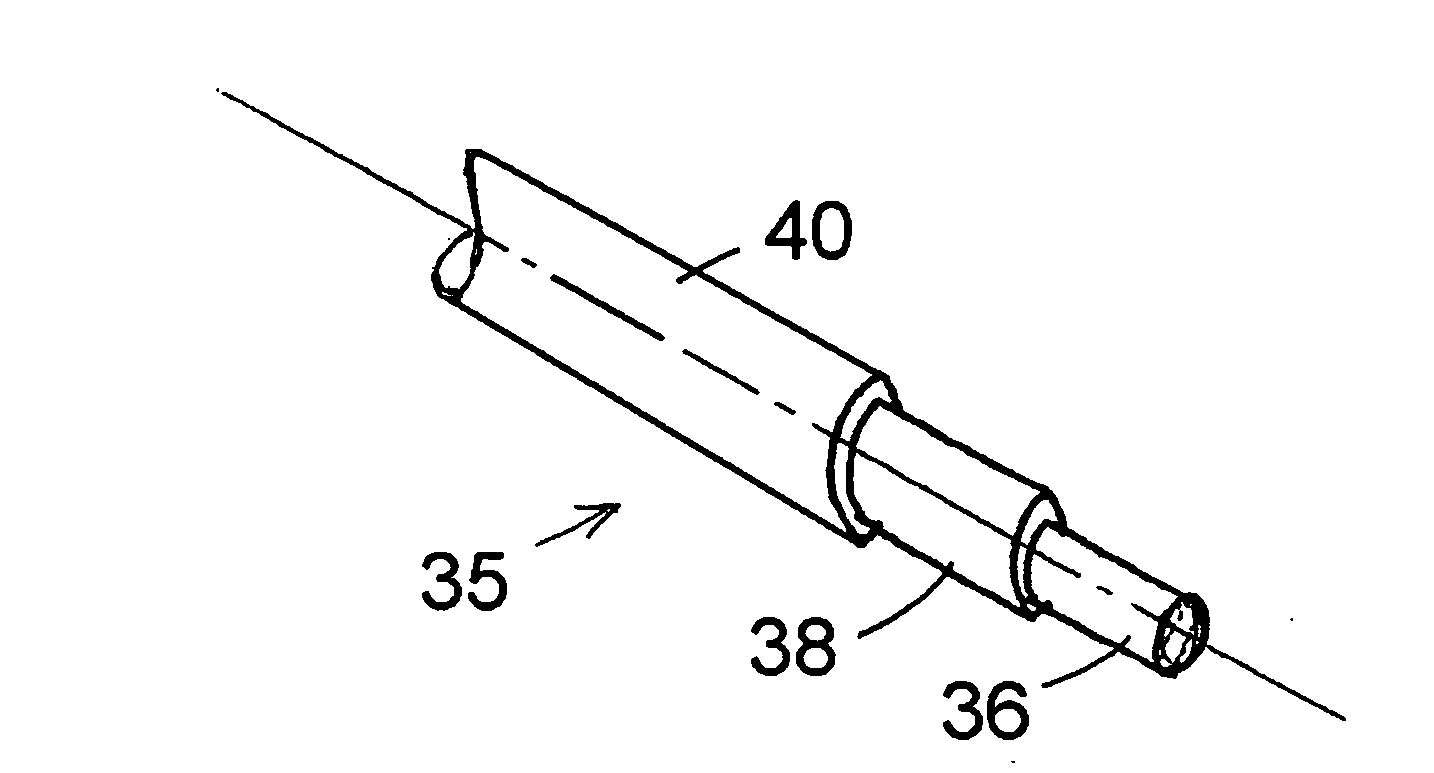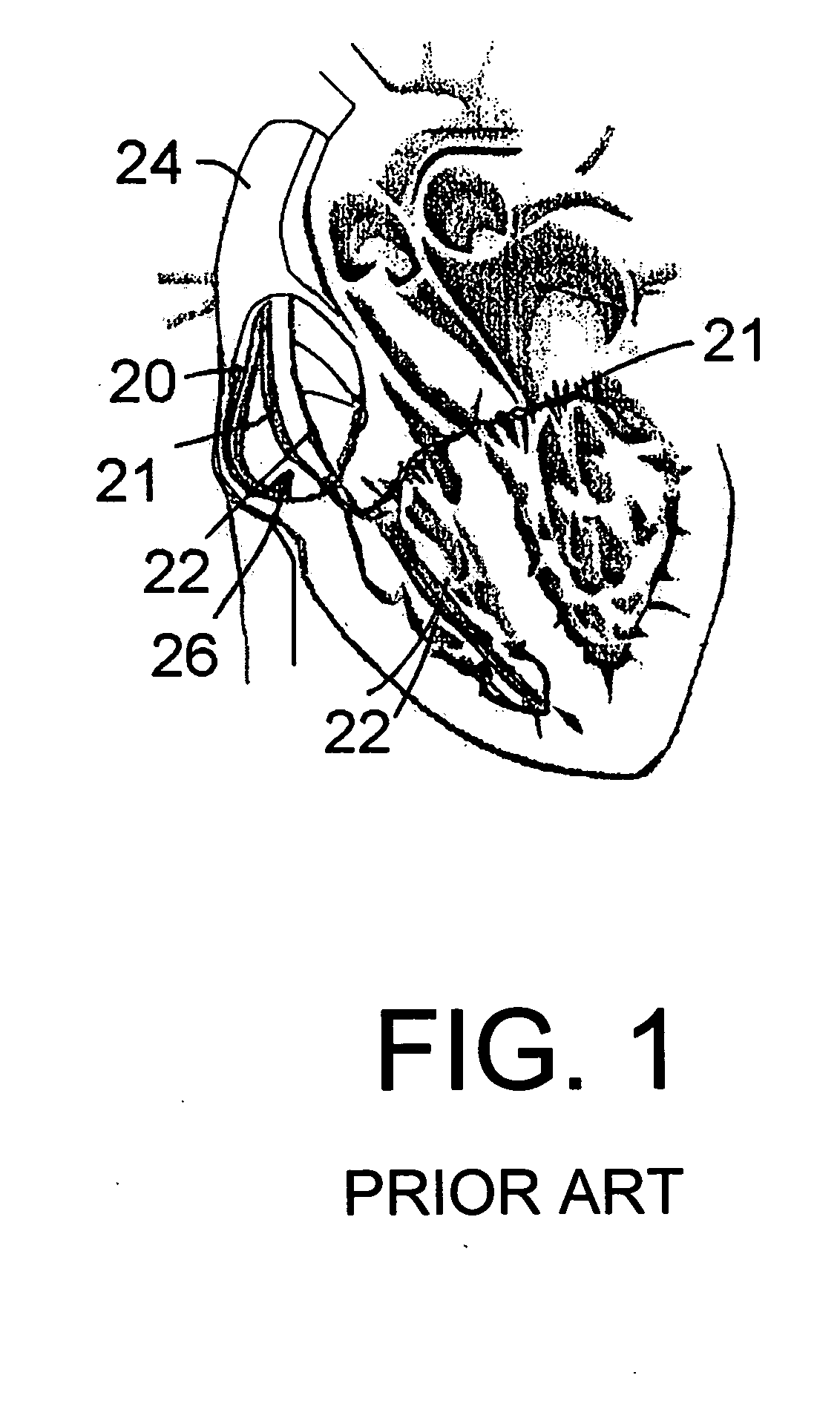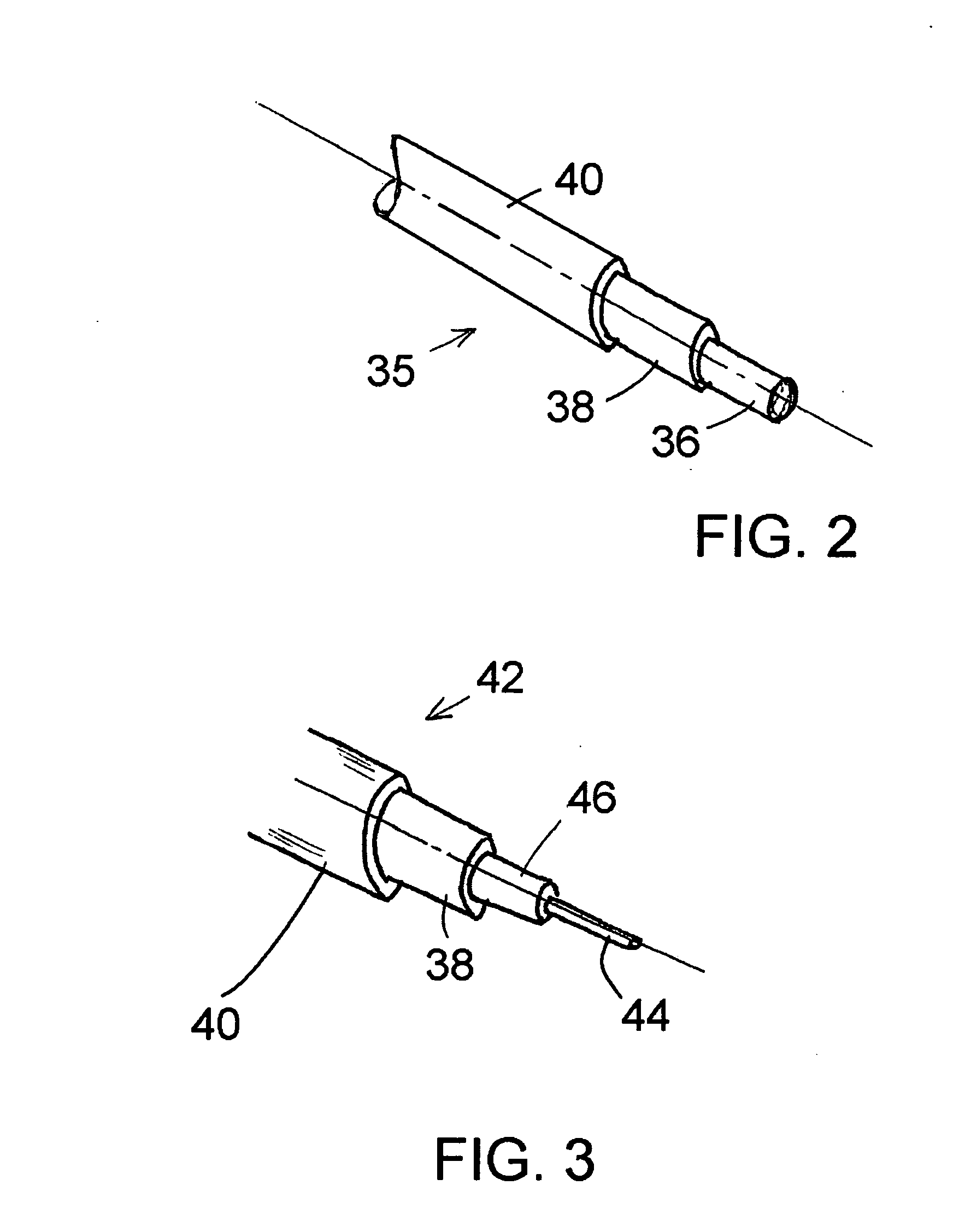Durable fine wire lead for therapeutic electrostimulation and sensing
a technology of sensing device and fine wire, which is applied in the direction of therapy, internal electrodes, transvascular endocardial electrodes, etc., can solve the problems of failure, failure to meet the needs of patients, and failure to achieve the effect of reducing the risk of cardiac arres
- Summary
- Abstract
- Description
- Claims
- Application Information
AI Technical Summary
Benefits of technology
Problems solved by technology
Method used
Image
Examples
Embodiment Construction
[0034]The invention encompasses all implantable electrostimulation devices with implanted wire leads, but is illustrated in the context of a cardiac pulsing device. Typically, a pacemaker is implanted just under the skin and on the left side of the chest, near the shoulder. The heart is protected beneath the ribs, and the pacemaker leads follow a somewhat tortuous path from the pacemaker under the clavicle and along the ribs down to the heart.
[0035]FIG. 1 shows schematically a human heart with some walls cut away. In FIG. 1 pacing leads are shown following a conventional path into the heart, and into the cardiac veins of the left ventricle, as has been typical of conventional practice and which, with some exceptions, is the basic path of leads of this invention.
[0036]In typical conventional practice, conductive leads 20, 21 and 22 are introduced into the heart through the superior vena cava 24, brought into the vena cava via subclavian or cephalic vein access points. For the right s...
PUM
| Property | Measurement | Unit |
|---|---|---|
| diameters | aaaaa | aaaaa |
| diameter | aaaaa | aaaaa |
| outer diameter | aaaaa | aaaaa |
Abstract
Description
Claims
Application Information
 Login to View More
Login to View More - R&D
- Intellectual Property
- Life Sciences
- Materials
- Tech Scout
- Unparalleled Data Quality
- Higher Quality Content
- 60% Fewer Hallucinations
Browse by: Latest US Patents, China's latest patents, Technical Efficacy Thesaurus, Application Domain, Technology Topic, Popular Technical Reports.
© 2025 PatSnap. All rights reserved.Legal|Privacy policy|Modern Slavery Act Transparency Statement|Sitemap|About US| Contact US: help@patsnap.com



